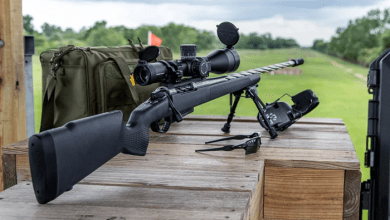
Transporting a motorcycle over a long distance involves careful planning and attention to detail. Motorcycles require specific handling due to their structure and sensitivity to movement. Proper preparation helps avoid damage and ensures it arrives in good condition. Transport risks can be minimized by following essential procedures before and during the shipment. This article outlines the essential steps to ensure safe transport across long-distance routes.
Choose A Reliable Shipping Company
Selecting a reliable motorcycle shipping company is a critical first step. A professional company with experience in motorcycle transport is more likely to handle the process safely. Verifying credentials, such as licensing and registration, provides assurance of compliance with transport standards. Reading verified customer reviews and examining service policies can help assess reliability. Confirming available transport options, timelines, and customer support practices contributes to a better decision. A dependable service provider reduces the likelihood of delays or mishandling.
Thoroughly Clean And Document The Bike’s Condition
Before transport, the motorcycle should be cleaned to remove dirt and debris. This step helps reveal any existing damage that might otherwise go unnoticed. Once the surface is clean, it is advisable to take clear photographs from multiple angles. Images should include the body, tires, and any noticeable marks or scratches. Written documentation of the bike’s condition can support these photos. Having a visual and written record protects both the owner and the transporter in case of disputes.
Drain Fluids, Check Tire Pressure, And Inspect For Leaks
Mechanical preparation plays a key role in safe transport. Fuel should be reduced to a minimal level to lower fire risk and weight. Oil and brake fluid levels should be checked for leaks or spills. Tire pressure needs to be adjusted according to manufacturer’s recommendations. Proper inflation helps the bike remain stable when secured. Addressing these areas ensures that the motorcycle is safe to move and minimizes the chance of mechanical issues during the journey.
Remove Or Secure Loose Parts And Disable Alarms
Loose components should be either removed or tightly secured. Items such as saddlebags, mirrors, or aftermarket attachments can shift or fall off during transit. If these parts are detachable, it is safer to pack them separately. Alarm systems should be turned off before transport begins. Unexpected noise or motion triggers may cause complications during handling. A compact and quiet motorcycle is easier to manage and less prone to damage.
Verify Insurance Coverage And Track The Shipment
Before shipping begins, the insurance coverage should be confirmed. The transport provider may offer basic coverage, but it is important to check the policy details. Some owners may choose to obtain additional protection based on the motorcycle’s value. It is also useful to have access to shipment tracking. Real-time updates allow for planning around delivery and reduce uncertainty. Confirming insurance and monitoring transport progress provides peace of mind during the entire process.
Transporting a motorcycle across long distances requires methodical preparation and careful handling. Choosing a trustworthy motorcycle shipping company, preparing the vehicle correctly, and securing it with the right tools are essential steps. Documenting the bike’s condition and verifying insurance offer added protection. Each step contributes to a safer and more efficient transport experience.



